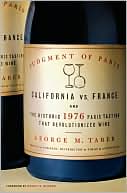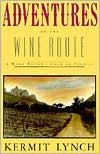The Widow Clicquot: The Story of a Champagne Empire and the Woman Who Ruled It
The story of the visionary young widow who built a champagne empire, showed the world how to live with style, and emerged a legend \ Veuve Clicquot champagne epitomizes glamour, style, and luxury. But who was this young widow--the Veuve Clicquot--whose champagne sparkled at the courts of France, Britain, and Russia, and how did she rise to celebrity and fortune?\ In The Widow Clicquot, Tilar J. Mazzeo brings to life--for the first time--the fascinating woman behind the iconic yellow label:...
Search in google:
The story of the visionary young widow who built a champagne empire, showed the world how to live with style, and emerged a legend. New York Times Book Review “The Widow Clicquot, Tilar J. Mazzeo’s sweeping oenobiography of Barbe-Nicole Clicquot Ponsardin, is the story of a woman who was a smashing success long before anyone conceptualized the glass ceiling.”
The Widow Clicquot\ The Story of a Champagne Empire and the Woman Who Ruled It\ Chapter One\ Child of the Revolution, Child of the Champagne\ What people in the Champagne remembered later about the summer of 1789 were the cobbled streets of Reims resounding with the chanting, angry mobs calling for liberty and equality. The French Revolution had begun, although no one would use those words yet to describe one of the most monumental events in the history of modern civilization. Democracy had taken root in the colonies of America only a decade before, and a new nation had emerged, aided in its war for independence from Great Britain by the military and financial might of France, one of the world's most powerful and ancient kingdoms. Now, democracy had also come to France. It was a bloody and brutal beginning.\ The young girls in the royal convent of Saint-Pierre-les-Dames, just beyond the old city center of Reims...a bustling commercial town of perhaps thirty thousand inhabitants, at the heart of the French textile industry and only ninety miles to the east of Paris...had little to do with this larger world of war and politics. Two centuries before, Mary, Queen of Scots had been a student in the abbey from the tender age of five, under the care of her aunt, the noble abbess Renée de Lorraine. The other girls at this Catholic convent school often came, like Mary Stuart and her noble aunt, from the ranks of the aristocracy, and they spent their days learning the graceful arts expected of the wealthy daughters of the social elite: embroidery, music, dance steps, and their prayers. The cloistered courtyard echoed with the light steps and rustling habits of nuns moving silently in the shadows, and the garden was shady and welcoming even in the summer heat.\ Their parents had sent them to Saint-Pierre-les-Dames to be educated in safety and privilege. But in July 1789, a royal abbey was just possibly the most dangerous place of all for these girls. The nobility and the church had crushed the peasantry with crippling taxes for centuries, and suddenly that summer, long-simmering resentments finally broke out into an open class war that changed the history of France. Old scores were being settled in horrifying ways. It was only a matter of time before the nuns and these young girls...the daughters of the city's social elite...became the targets of public abuse. Already, there were stories from Paris of nuns being raped and the rich being murdered in the streets. Now, wine flowed from the public fountains, and the laughs and cheers of the crowd in Reims had become more and more feverish.\ Behind the shuttered windows, cloistered within the royal walls of Saint-Pierre-les-Dames, one of those girls may not have known that the world and her future were being transformed until the mob was nearly at their doorstep. Barbe-Nicole Ponsardin was eleven years old when the Revolution began. She was a small and serious girl, with golden blond hair and large gray eyes, the eldest daughter of one of the city's wealthiest and most important businessmen...an affluent and cultured man who dreamed of moving his family into the aristocracy and had sent his child, accordingly, to this prestigious royal convent to be educated with the daughters of feudal lords and princes.\ Now, the streets of Reims were alive with angry crowds, and it seemed that Barbe-Nicole would share the fate of her aristocratic classmates. The shops everywhere were closed, and the fields were empty. In the center of the city, in the grand family mansion on rue Cérès, just beyond the shadow of the great cathedral, her parents...Ponce Jean Nicolas Philippe and Marie Jeanne Josèphe Clémentine Ponsardin, or more simply Nicolas and Jeanne-Clémentine...were frantic. Even if there were a way to send a carriage through the streets of Reims to fetch Barbe-Nicole, such a display of wealth and fear would only advertise her privilege and increase her danger on the streets.\ Their last hope rested with the family dressmaker, a modest woman but with remarkable bravery. Arriving quietly at the convent door with a small bundle of garments, anxious not to be observed, she knew the only way to spirit a wealthy daughter through the streets of revolutionary France: in disguise. After she dressed the child in the clothes of the working poor, they hurried. The shapeless tunic must have itched, and Barbe-Nicole's first steps in the coarse wooden shoes...so different from her own soft leather slippers...were surely unsteady.\ In another moment they had slipped out into the frenzied streets of Reims, praying to pass unnoticed. No one would bother a dressmaker or a peasant girl, but the convent-educated daughter of a bourgeois civic leader...a man who had personally helped to crown the king only a decade before...would make a compelling target for abuse. Much worse would happen to some of those whom Nicolas and Jeanne-Clémentine had entertained on those long summer evenings in the splendid halls of their family estate before the Revolution.\ The roads beyond the convent were a brilliant red tide of men in Phrygian caps, classical symbols of liberty once worn by freed slaves in ancient democracies, singing familiar military marches with new words. In the distance was the sound of beating drums, and heels striking the cobble pavement echoed off the stone facades of the grandest buildings in Reims, as the men organized themselves into makeshift militias. There were fears throughout France of an imminent invasion, as the other great monarchs of Europe roused themselves to send troops to crush the popular uprising that had electrified the masses across the continent.\ Hurrying through those chaotic streets must have been terrifying for a small girl. All around her was uproar as the mob gathered. They moved quickly past. Then, perhaps in the crowds of angry men, one or two looked at Barbe-Nicole with the perplexed stare of dim recognition. Perhaps she witnessed some of the many small atrocities of the Revolution...the vandalism, the beatings. The day was something no one who experienced it would ever forget.\ The Widow Clicquot\ The Story of a Champagne Empire and the Woman Who Ruled It. Copyright © by Tilar Mazzeo. Reprinted by permission of HarperCollins Publishers, Inc. All rights reserved. Available now wherever books are sold.
Ch. 1 Child of the Revolution, Child of the Champagne 1 Ch. 2 Wedding Vows and Family Secrets 11 Ch. 3 Champagne Dreams 24 Ch. 4 Anonymity in Their Blood 36 Ch. 5 Crafting the Cuvee 49 Ch. 6 The Champagne Widow 60 Ch. 7 Partner and Apprentice 70 Ch. 8 Alone at the Brink of Ruin 84 Ch. 9 War and the Widow's Triumph 100 Ch. 10 A Comet over Russia: The Vintage of 1811 113 Ch. 11 The Industrialist's Daughter 121 Ch. 12 The Wine Aristocrats 130 Ch. 13 Flirting with Disaster 143 Ch. 14 The Champagne Empire 155 Ch. 15 La Grande Dame 166 Ch. 16 The Queen of Reims 178 Afterword 187 Notes 195 Selected Bibliography 239 Index 257
\ Associated Press Staff“If you like champagne, “The Widow Clicquot” by Tilar J. Mazzeo is definitely worth a drink.”\ \ \ \ \ Mireille Guiliano"Joan of Arc and Madame Clicquot were the two women heroes I knew when growing up in France. What a gift to have this new, well-researched biography of one of the world’s first ‘legitimate’ businesswoman, our contemporary as a global business leader."\ \ \ Benjamin Wallace"The Widow Clicquot is someone we should all know about.... Long a shadowy, legend-obscured figure, in Tilar Mazzeo’s agile hands the widow sheds her weeds and takes form before our eyes as a distinctly modern entrepreneur....The result is narrative history that fizzes with life and feeling."\ \ \ \ \ Julia Flynn Siler"Told in a light and graceful style that is just right for its subject…. [I]t’s a fascinating trip, made even more so by Ms. Mazzeo’s charming cameo appearances as a kind of tour guide…. This example of Barbe-Nicole’s voice is exceptional…an intoxicating business biography."\ \ \ \ \ From the Publisher"Narrative history that fizzes with life and feeling." —-Benjamin Wallace, author of the New York Times bestseller The Billionaire's Vinegar\ \ \ \ \ Associated Press Staff"If you like champagne, "The Widow Clicquot" by Tilar J. Mazzeo is definitely worth a drink."\ \ \ \ \ Associated Press“If you like champagne, “The Widow Clicquot” by Tilar J. Mazzeo is definitely worth a drink.”\ \ \ \ \ Los Angeles Times"Mazzeo’s tale moves swiftly through Barbe-Nicole’s many accomplishments, including her method for storing bottles nose-down—an innovation that allowed the second fermentation detritus to be cleared efficiently, setting her far ahead of her competitors."\ \ \ \ \ Canberra Times"This book is full of fascinating morsels of information."\ \ \ \ \ New York Times Book Review"The Widow Clicquot, Tilar J. Mazzeo’s sweeping oenobiography of Barbe-Nicole Clicquot Ponsardin, is the story of a woman who was a smashing success long before anyone conceptualized the glass ceiling."\ \ \ \ \ Austin ChronicleThe Widow Clicquot is a miraculous feat of organization, one worthy of a doctoral thesis…. [I]n its moments of action, this is actually a gripping story. And while the book appears to be a feminist history/business biography, it’s also the appealing story of the author’s odyssey.\ \ \ \ \ USA Today"Mazzeo’s resulting book is an enticing stew of biography and history."\ \ \ \ \ Newsday"Tilar J. Mazzeo’s informed and enlightening biography of Madame Clicquot, the widow and, more important, the businesswoman, retrieves her vintage story as if looking for a rare bottle in one of the Champagne region’s deepest caves."\ \






